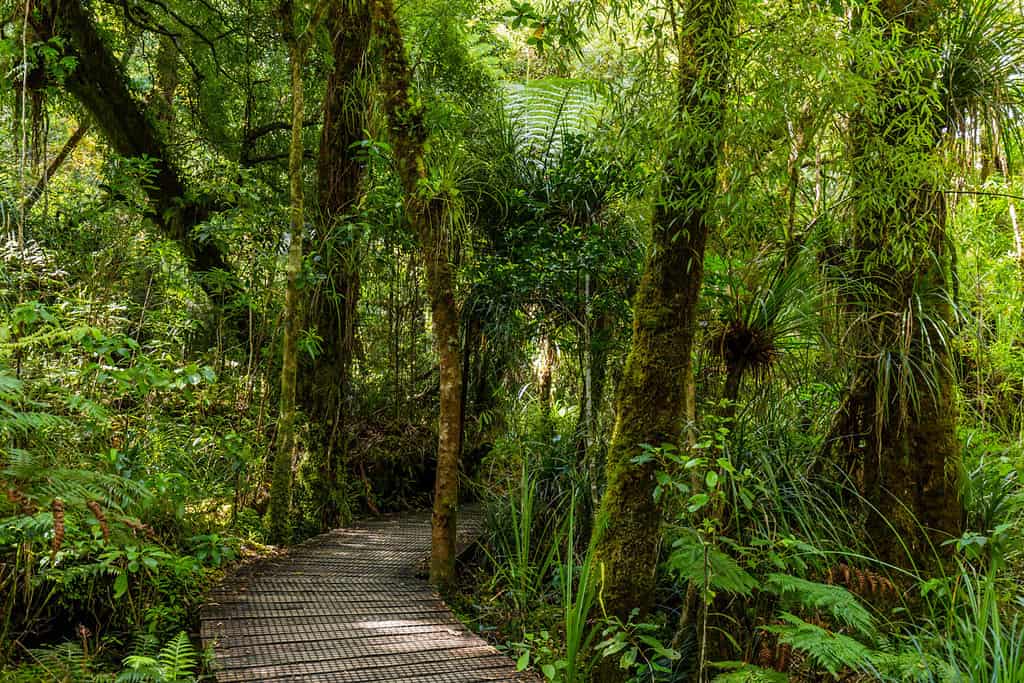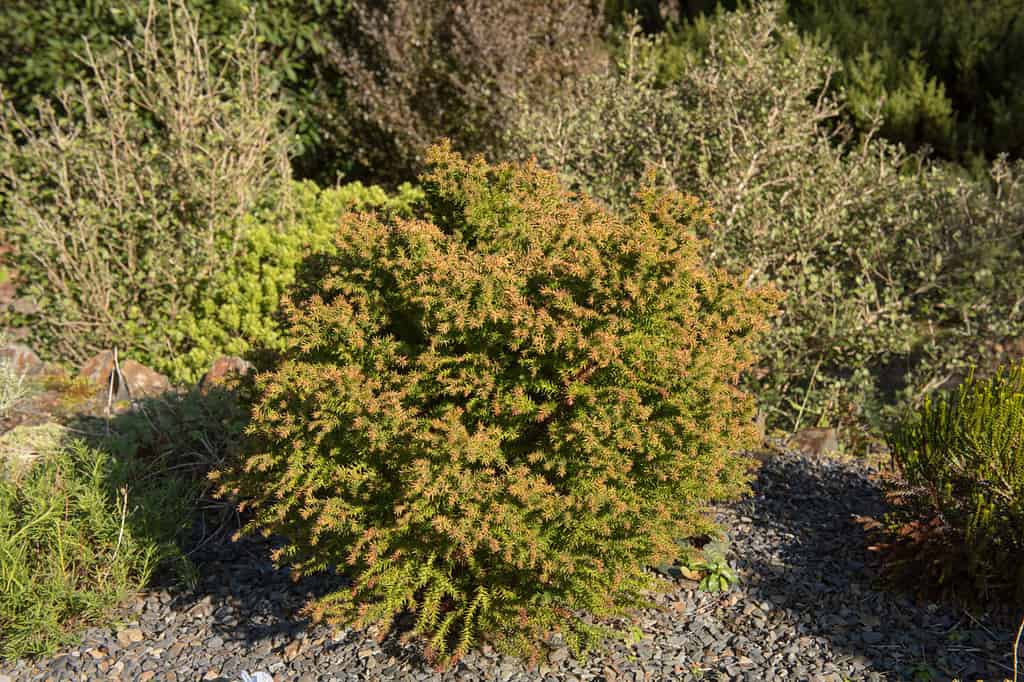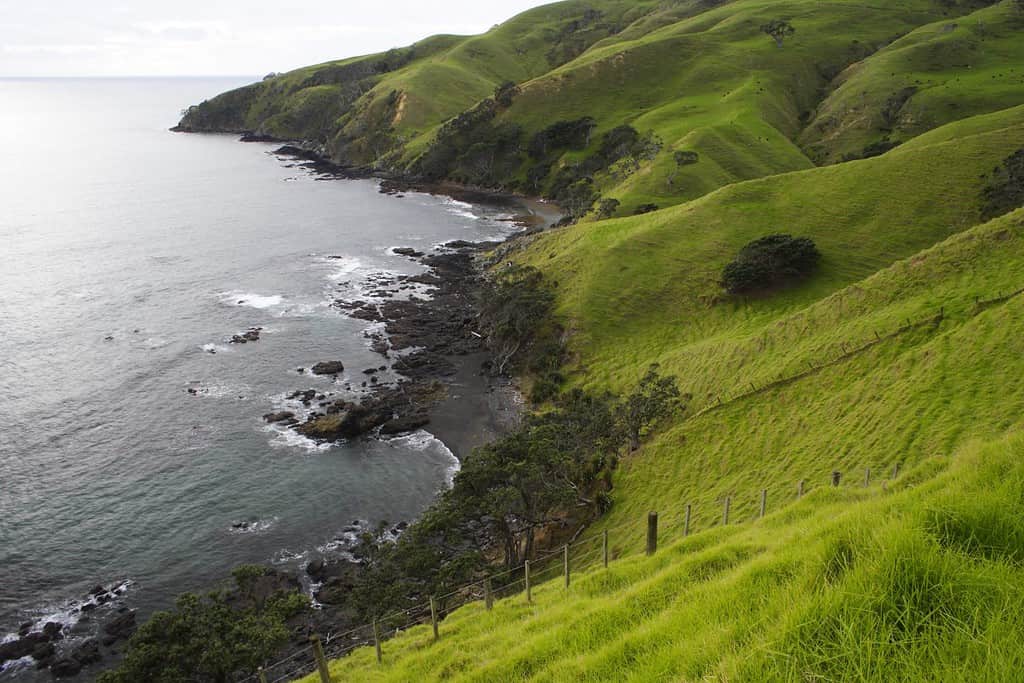Trees play a vital role in maintaining a healthy environment. They are habitats for birds, mammals, reptiles, and insects. Trees filter the air. They provide fruit. These are just a few of the important functions of trees on Earth. According to scientists, there are roughly 73,000 species of trees around the world! Many of these have still not been identified – that is yet to come. Within the incredible and diverse world of trees, learning about the many unique trees native to different continents and ecosystems can be exciting.
Understanding the differences between tree species can also deepen our appreciation for the vast diversity of trees – and the role each species plays in our amazing world. This article compares two tree species: the Kauri tree of New Zealand and the Sugi tree of Japan. Each is fantastic in its own way. Let’s jump in to compare the Kauri and the Sugi now!
| Quality | Kauri Trees | Sugi Trees |
|---|---|---|
| Description | The Kauri tree is an evergreen coniferous tree. | The Sugi tree is a monotypic evergreen conifer in the cypress family. |
| Names | Kauri, Southern kauri, New Zealand kauri | Sugi, Japanese cedar, Japanese redwood |
| Species | Agathis australis | Cryptomeria japonica |
| Family | Araucariaceae | Cupressaceae |
| Origin | New Zealand | Asia, including China and Japan |
| Natural Habitat | Temperate lowlands and swampy areas in New Zealand | Forest, particularly warm and moist environments |
| USDA Hardiness Zones | Zone 9 | Zones 5-6 |
| Size | They typically grow to between 130 and 165 feet tall. | They typically grow to be up to 200 feet tall. |
About Kauri vs. Sugi Trees
About Kauri Trees
Kauri trees (Agathis australis) are native trees that grow in the northern part of New Zealand’s North Island. These evergreen trees often reach between 100 and 160 feet tall, with trunks between 2 and 20 feet in diameter. The branches grow high above the ground, with the tallest trees having limbs that appear 50 feet above the ground. These trees grow best in sunny areas with partial shade, in temperate lowland regions with free-draining soil. These trees can live for years, growing out of the ground with blue-gray-colored bark. Kauri trees have both male cones, which are cylindrical, and emale seed cones, which are globose and much larger.
About Sugi Trees
Sugi trees (Cryptomeria japonica), also known as “Japanese cedar” trees, are evergreen conifers. These trees typically grow to be up to 200 feet tall in the wild. They are narrow, growing in a generally conical shape, with thick trunks up to 13 feet in diameter and erect branches. The tree’s cones are globular, dark brown, and only a few centimeters wide. Scientists have developed many different cultivars of Sugi trees, many of which can be found in Japan.
Kauri vs. Sugi Trees
Though both Kauri and Sugi trees are evergreen conifers, there are quite a few differences between them.
1. Where They Grow

Kauri trees grow in New Zealand.
©NataliaCatalina.com/Shutterstock.com
First, Kauri trees grow in New Zealand in USDA hardiness zone 9, in temperate lowland areas. In comparison, Sugi trees grow in parts of Asia such as China and Japan, where they thrive in warm and humid forests, and can survive in USDA hardiness zones 5 and 6.
2. Size

Sugi trees are also called “Japanese cedar” and they are commonly planted around temples and near shrines.
©iStock.com/MasahikoYamada
While both Kauri and Sugi trees are giants, Sugi trees, which can grow to over 200 feet tall, can reach relatively greater heights compared to Kauri trees, which usually reach up to 160 feet.
3. Age

Kauri trees in New Zealand are some of the most ancient trees in the world.
©W. Bulach / CC BY-SA 4.0 – License
New Zealand’s Kauri trees are thought to be some of the oldest trees in the world. In fact, some living specimens are believed to be 4,000 years old! Sugi trees, while giant, rarely reach to be even 200 years old. They certainly do not get to Kauri trees’ thousands of years of maturity.
4. Gum

The Maori people of New Zealand have traditionally used Kauri trees for wood to build many different products and used Kauri resin as a fire starter, medicine, and gum.
©Mike Powell/ via Getty Images
Kauri trees produce a unique resin known as “Kauri gum,” which leaks out of the tree through cracks in the bark. This resin has been used for chewing, medicine, and even decorations. In fact, lumps of Kauri gum have been known to sell for thousands of dollars!
In comparison, Sugi trees do not produce any kind of similar substance. While sap flows through the trees, it is nothing compared to the gummy resin produced by the Kauri.
5. Uses

Sugi trees are one type of “Japanese cedar” in the
Cryptomeriagenus. There are many cultivars, including the ‘Tilford Gold’ cultivar sometimes planted in the United Kingdom.
©Peter Turner Photography/Shutterstock.com
Traditionally, the Maori people of New Zealand used the soft wood timber from Kauri trees to build boats, houses, and woodcarvings. They also use the gum as a fire starter, chewing, and medicine.
Sugi trees, like Kauri trees, have often been used to build homes, bridges, ships and furniture. Sugi tree wood is soft and fragrant, so Japanese people have incorporated it into a wide variety of home goods, decorations, and other uses.
6. Value

Kauri trees grow on New Zealand’s North Island.
©Sasapee/Shutterstock.com
Kauri tree wood is among the most valuable timber in the world. Since it comes from ancient trees, and extracting timber from the rural New Zealand swampland can be difficult, it is often very expensive.
In comparison, Sugi wood is generally available in Asia but is not widely exported. It is considered a less expensive cedar option compared to others on the market.
The photo featured at the top of this post is ©
Thank you for reading! Have some feedback for us? Contact the AZ Animals editorial team.






